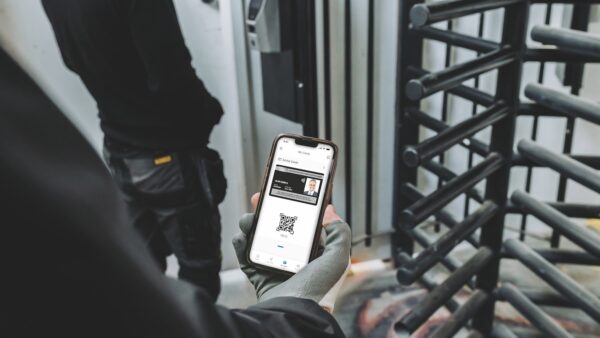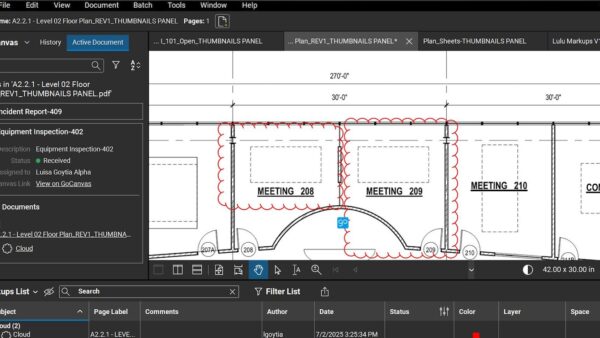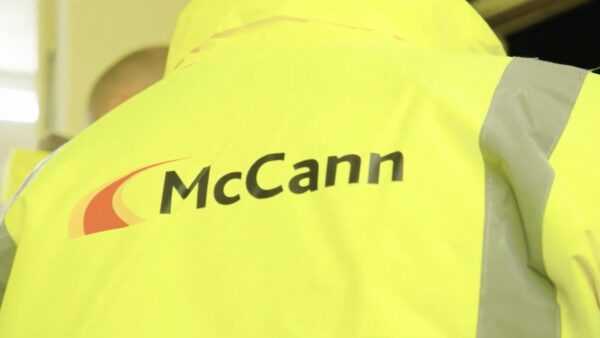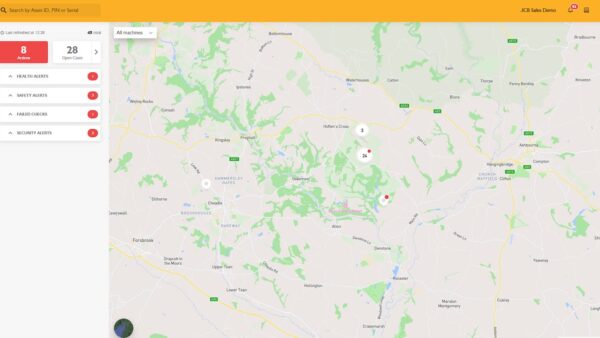
Can a tool based on blockchain and originally developed to authenticate the provenance of fine wine be used to provide increased trust within the residential sector?
A digital tool developed by KPMG Australia, now operating as OriginsNext, to assure better quality and accountability in construction is being trialled in the UK.
The tool, initially used for high-value products like agricultural commodities (fine wine or sugar), was adapted for the construction sector in New South Wales, Australia, explains Kevin Masters, a partner in KPMG UK’s major projects advisory business.
The platform collects and validates data on quality checks, contributing to a ‘trustworthy indicator’ rating system. Masters says it has provided market benefits for those that have signed up to it, including higher property values, lower insurance premiums, and cheaper financing for residential property developers.
Masters is now spearheading adoption of OriginsNext in the UK, using his background and knowledge of the sector to drum up interest. A qualified civil and structural engineer, he moved to KPMG from Bryden Wood where he was a board director.
“I was responsible for organising and negotiating commercial contracts and our insurance renewals and was very much at the forefront of understanding the impact and implication of the Building Safety Act on the business and industry,” he says.
So, what is the background to OriginsNext and how can it benefit the UK market?
CM Digital: How did the KPMG solution for building trustworthiness come about?
Kevin Masters: The solution started in Australia when the Building Commissioner for New South Wales (NSW) commissioned research into the quality of workmanship in the region, particularly in high-rise residential, and the results showed profound challenges.

“A higher trustworthy indicator score is achieved when information has a higher proportion of checks, which the platform can validate.”
This is because in Australia, each state has its own requirements – there is no one Australia-wide standard. That creates even more opportunity for siloed working and very little collaboration. Also, the size of the land mass means the housing sector is very fragmented, so there is a tendency for a greater proportion of smaller developers. And health and safety is not as advanced as it is in the UK.
The Building Commission in NSW issued a Request for Proposal to the market for a digital platform, which could record information about developments in progress or about to be going on site, and whether quality checks were being undertaken.
NSW wanted it to include all firms – including all the consultants – and bring all the information together so that the NSW government could assess where they needed to intervene more in the market.
And how did KPMG get involved?
Our team based in Australia had already developed a tool relating to agricultural commodities (like wine and the fine foods industry), where traceability of the product is important. When you’re buying a wine collection at several hundred thousand dollars, you want to be certain that you know the variety of grape, the person who grew it and the way it was checked is authentic. We could see that we would be able to use the assets we’d developed for agriculture and apply it to construction.
Our proposal was attractive to NSW because it also had a market component. We could see that not only could we collect the data and have it all in one place, but that you can use that data to harness market forces to drive greater participation.
How does the model work?
For the commodities sector like wine, for example, all the data is available from the people who grew it, people who bottle it and the people who are selling it, but it was typically only in certain locations. The tool collated all those existing data points into one platform where an investor could see them.
“Judith Hackitt was not only impressed with the Building Trustworthy indicator, but also the ability to create asset traceability and how you assemble a building’s DNA.”
The KPMG team in Australia amended the tool to be applied to the built environment. Our model was independently reviewed in terms of how it captures and validates data, generating an indicator of how trustworthy the information is.
A developer of multiple schemes can now collect the information and provide it to the platform. A higher trustworthy indicator score is achieved when information has a higher proportion of checks (a higher weighting is given to third-party checks), which the platform can validate. The checks break down the different components within an asset (waterproofing, foundations, etc), giving a comprehensive overview.
It is based on blockchain. The blockchain removes ‘human intervention’, ie, it operates within set rules and if they are met, the system permits it. There is no human to add subjectivity.
Can you explain the rating further?
It does not provide assurance about the design. It is saying that somebody has designed it, and here is the evidence of who designed it. Here are all the regulations they have used to make sure they designed it correctly. And here are the people who have checked it, including any third parties involved. It also validates that what was planned to be designed is what was built. This is brought together into a single ledger that is easy to navigate for asset owners, investors, insurance providers, etc.
If you make a specification for a particular window product, for example, it validates that the window you specified at that point in time is the same that has been installed. That’s because we can link information across design, installation and installation checks performed on site.
Monitoring the supply chain
The KPMG team has also developed a digital tool for assessing supply chain resilience. KPMG Supply Chain Predictor provides end-to-end, real-time oversight of a company’s entire supply chain, while using predictive analytics and AI to identify potential disruptions before they occur.
Masters explains: “What this tool does is map out your supply chain across developments and monitor public information and other sorts of insights to be able to identify in real-time the vulnerabilities in your supply chain, so you can plan for risk and potentially look for alternative suppliers.”
KPMG says the difference between its system with other supply chain risk systems is that it is based on predictive and real-time data – not historical data.
“It’s fully deployed across multiple sectors in a number of countries. It is also being piloted in the UK,” Masters adds.
The participants are not creating new data. They are not formatting it any differently from how they would normally produce it. Our tool simply collects it, assesses it and serves it up as insight. It can be applied to all residential projects, not just high-rise and retrofitting, which is what it was originally applied to in NSW for cladding replacement.
How do market forces come into play here?
We began speaking with Dame Judith Hackitt in her role as chair of the Industry Safety Steering Group about the similarities between the UK and Australian housing markets, and how OriginsNext might find a place here. She was not only impressed with the Building Trustworthy indicator, but also the ability to create asset traceability and how you assemble a building’s DNA.
It is our view that culture change needs to be led by the industry – more and more regulation cannot solve everything. If you have multiple developments that now have a five-star rating according to this traceability tool, you can demonstrate to consumers that you are a trustworthy developer. It is then more likely that the consumer will trust your product and therefore buy it, or rent it, in preference to another that does not have that rating, or perhaps has a lower rating.
In Australia, apartments that get a better rating obtain a slightly better price for that same apartment. Additional potential benefits come from lower insurance premiums and cheaper rates for capital investment. So you have insurers and the financial sector driving greater participation in terms of providing that traceability, which is very different from producing more regulation.
What’s the commercial model for the tool?
It’s called a maker/taker model. Those who are making the information, the designers, engineers, manufacturers, if you like, would not pay. But those who take benefit from that, ie insurance providers, financiers, developers, would pay them to get the insight.
Developers, for example, wouldn’t pay to add (make) data into the model, but would pay if they were to ‘take’ a benefit from the tool.
If they add design information, they wouldn’t pay. They do pay to receive the trustworthy score or to benefit from any other insight, such as missing information that gave rise to a lower trustworthy score.
Or, for example, what their portfolio level trustworthy score is, which could be used to lower their insurance premiums and get better financing deals.
It’s a model used in tech to incentivise participation by only charging those who take a direct benefit.
What are the next steps?
We are talking with potential clients, and there’s consensus that the industry needs a tool like this. The industry will benefit, as will consumers. If you’re going to buy or rent an apartment, you can do so with more confidence that it has been designed and constructed in the way it should have been.
In terms of the technology, it is always evolving based on what it’s learning. There are all sorts of future opportunities around using more AI components to provide insights and pull larger volumes of data from the public domain.
Comments
Comments are closed.
















Unless people who organise and manage work programmes understand construction quality control at the coalface and don’t just buy suppliers on price alone there is no point to systems like this it is just another pointless costly gimmick.
Residential and commercial construction has been engaged in a rush to the bottom on quality since 1945 based on cost alone. Countless generations of so called professionals have no idea how to build and what good looks like let alone excellent.